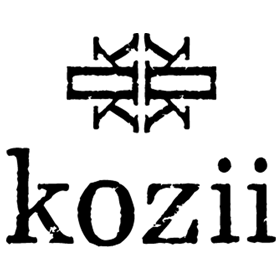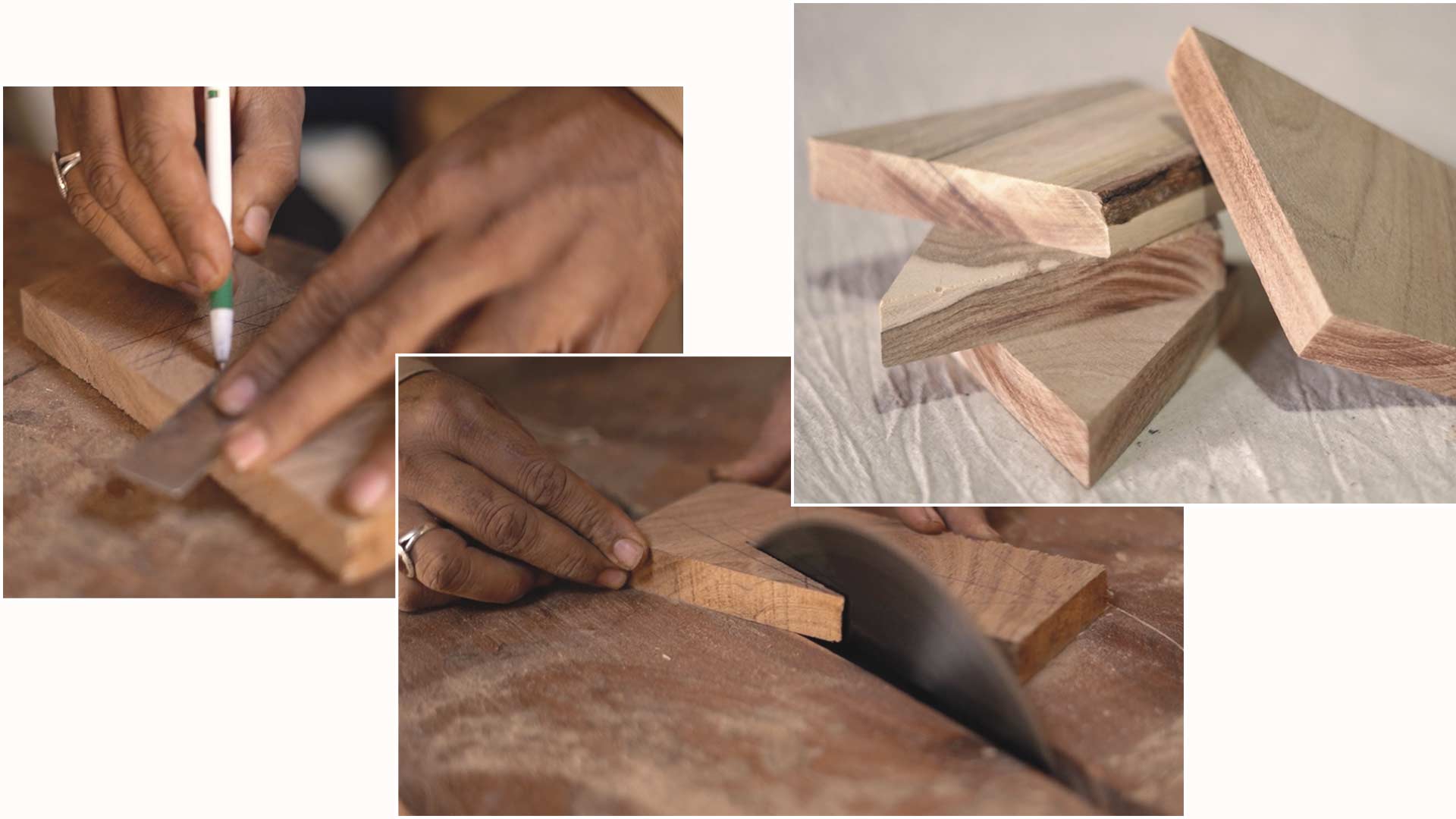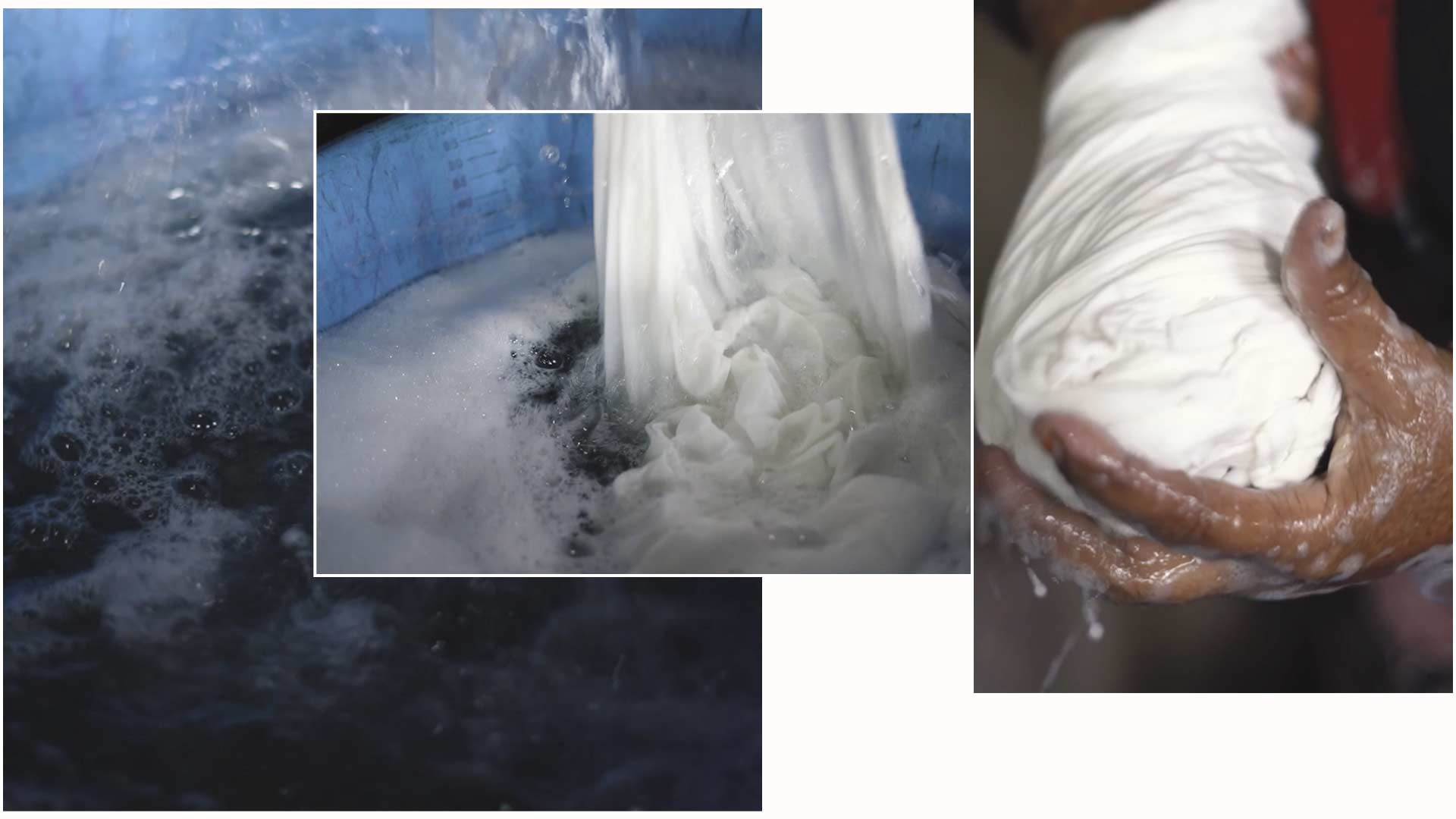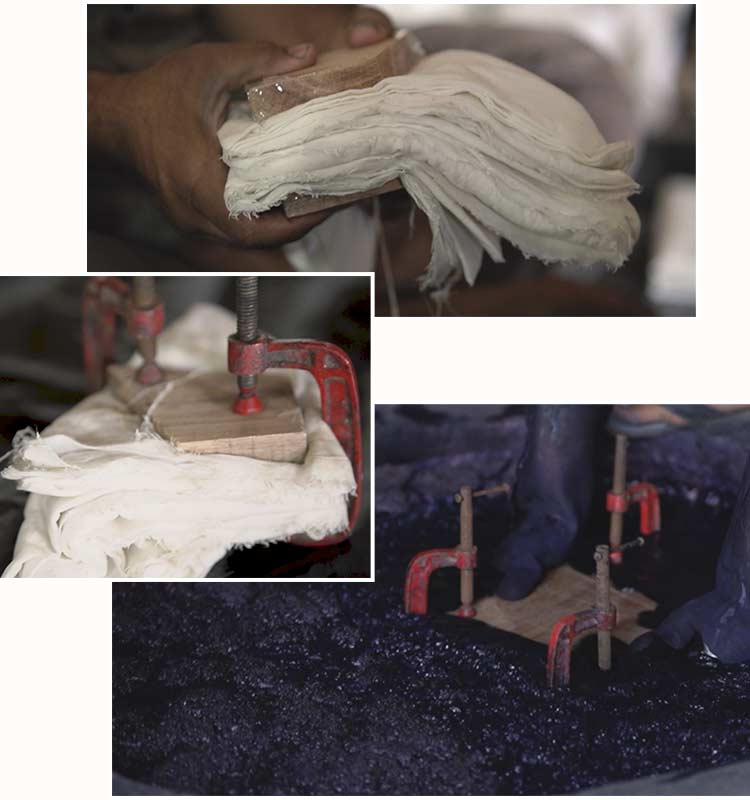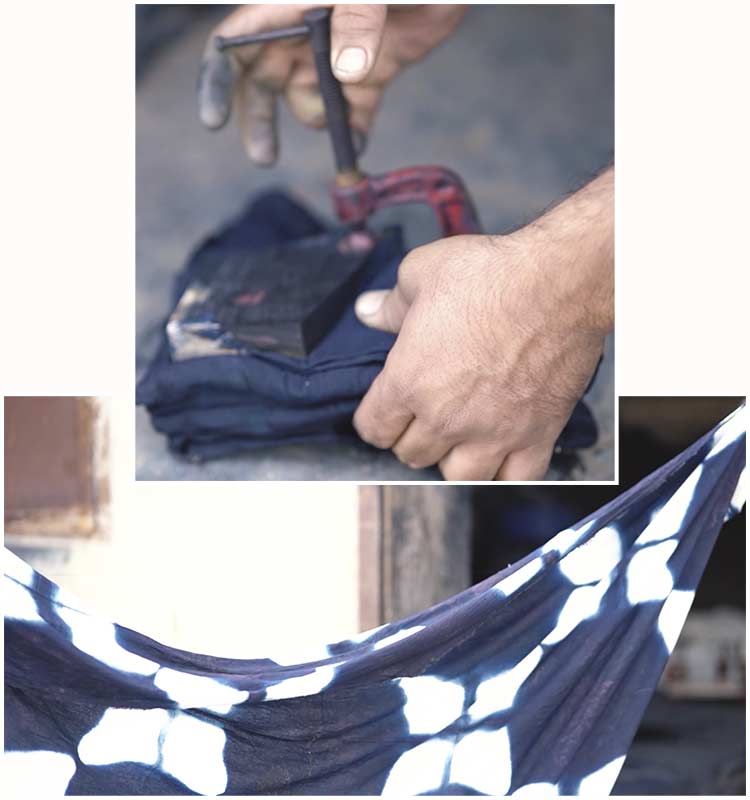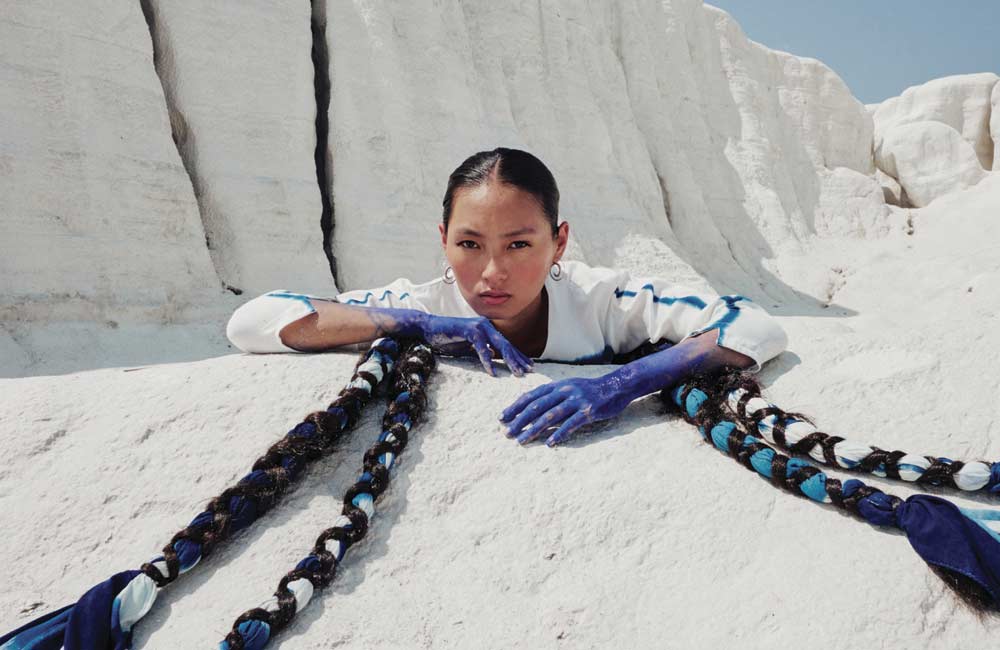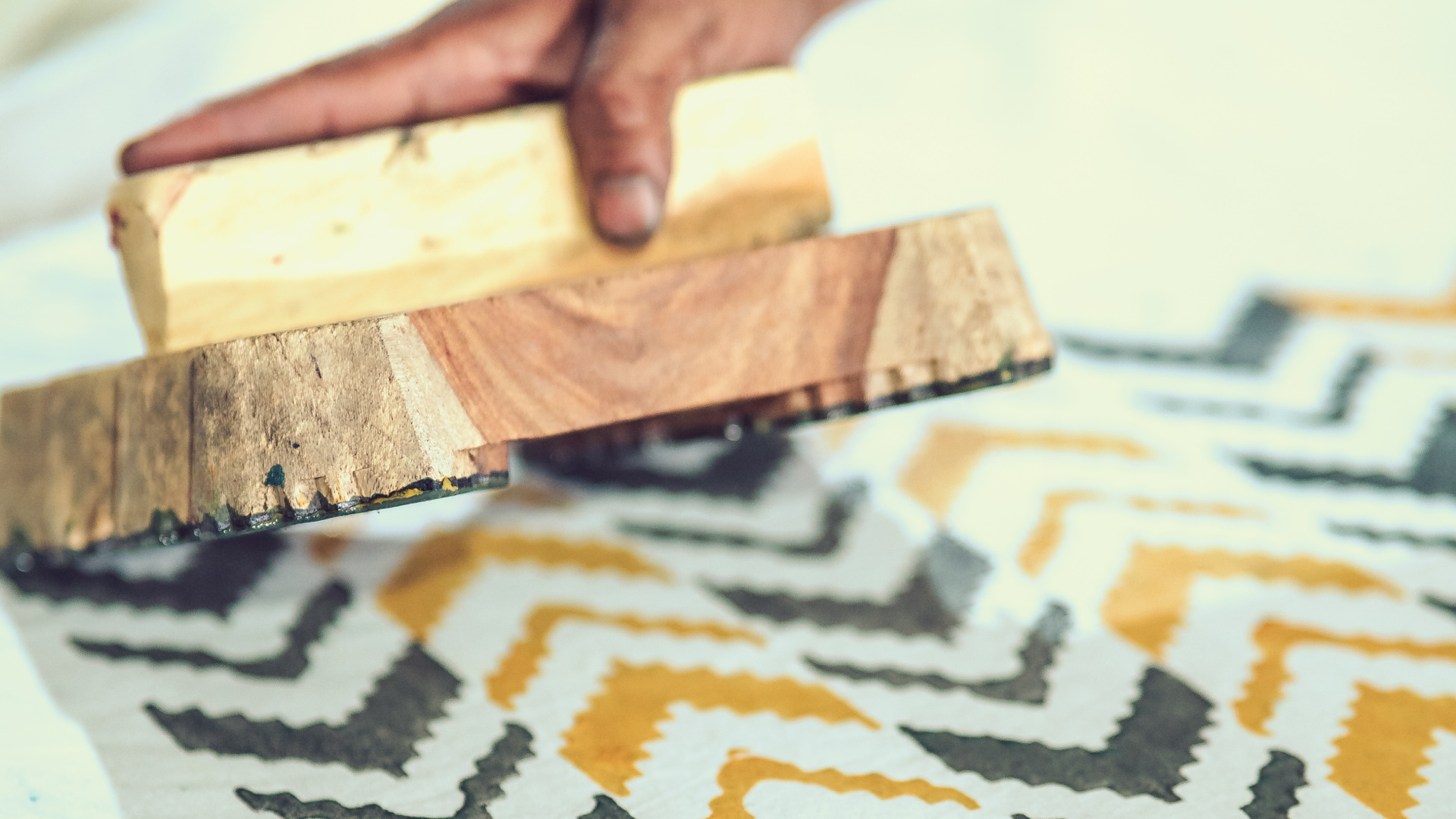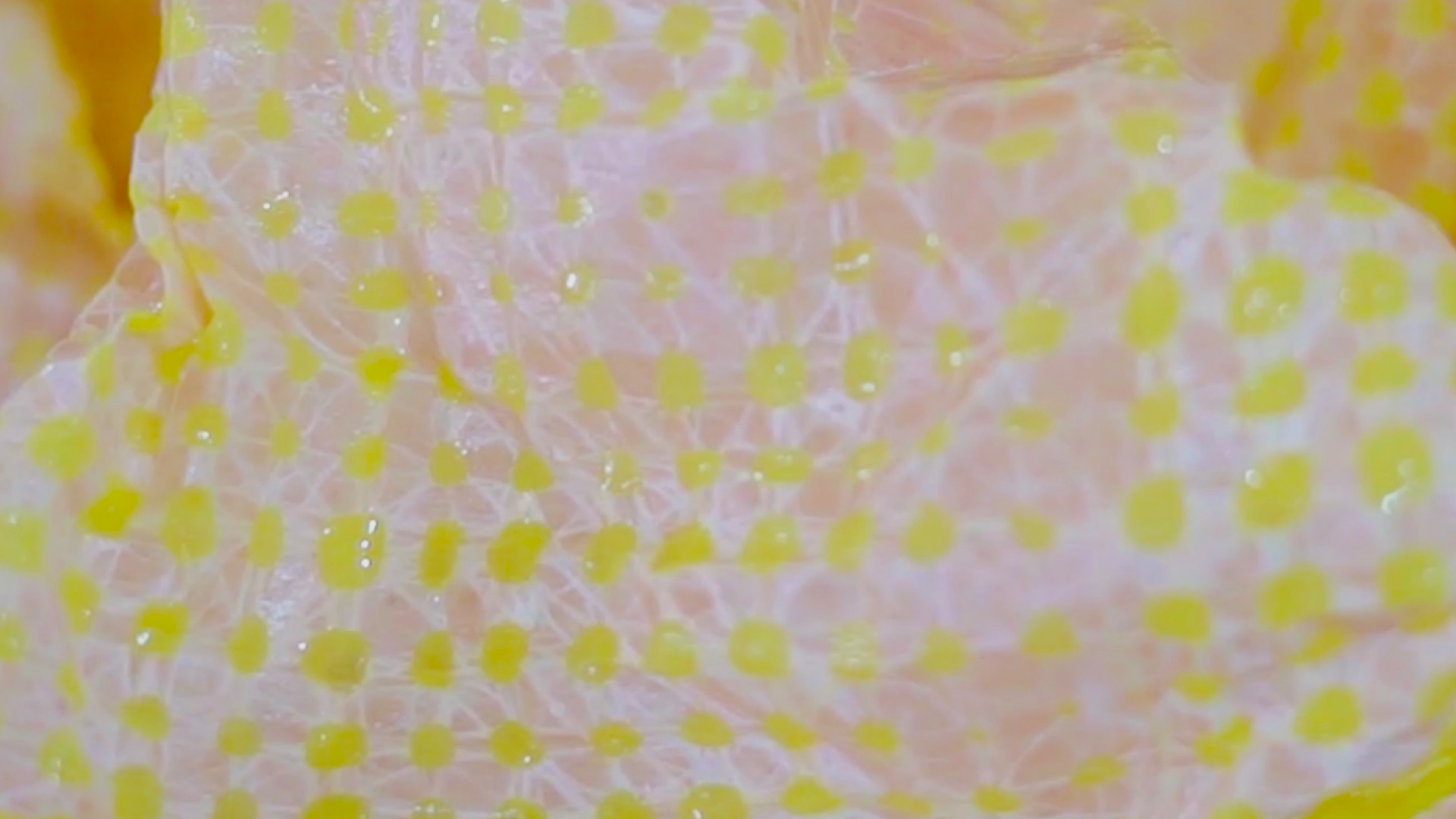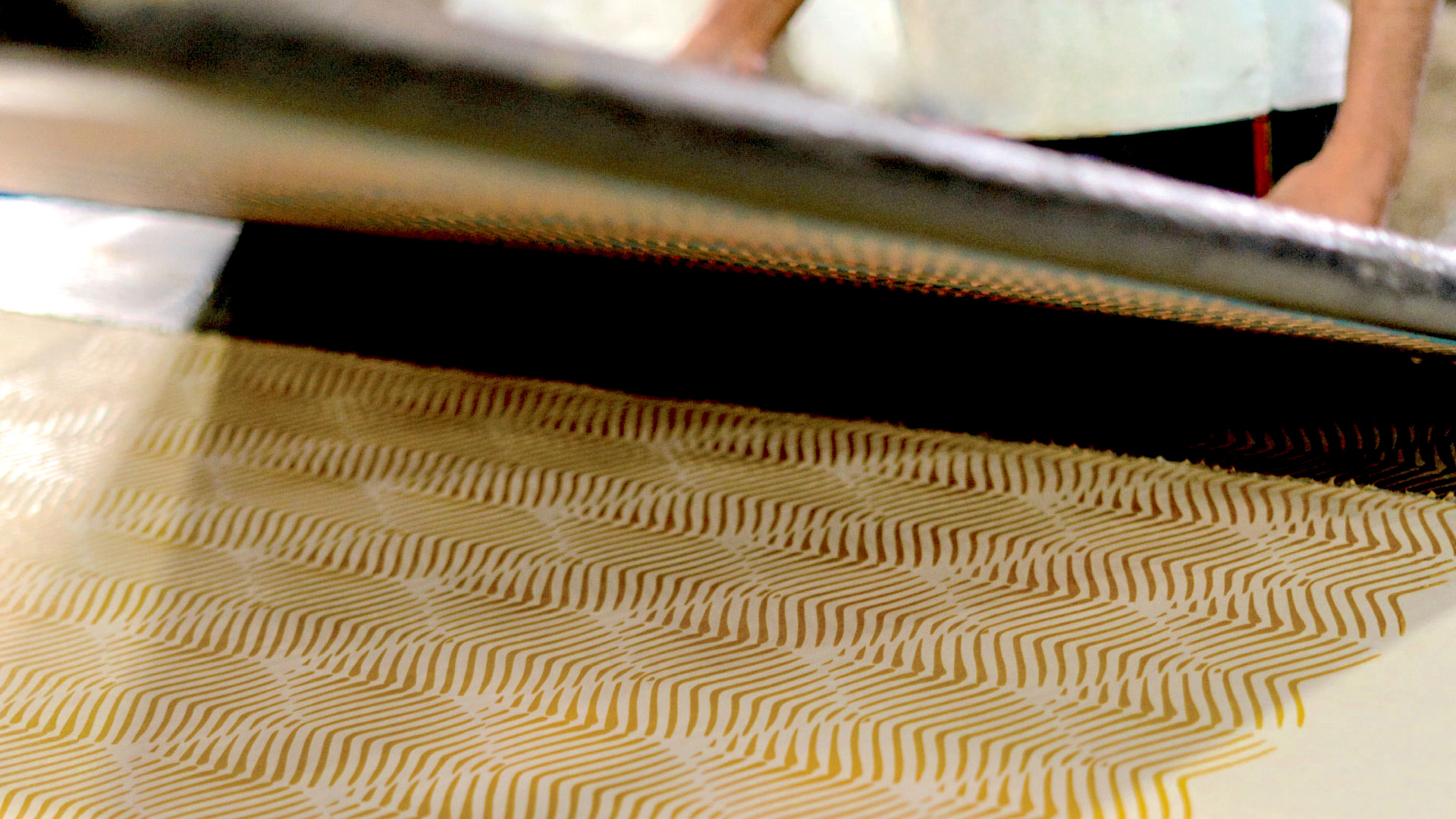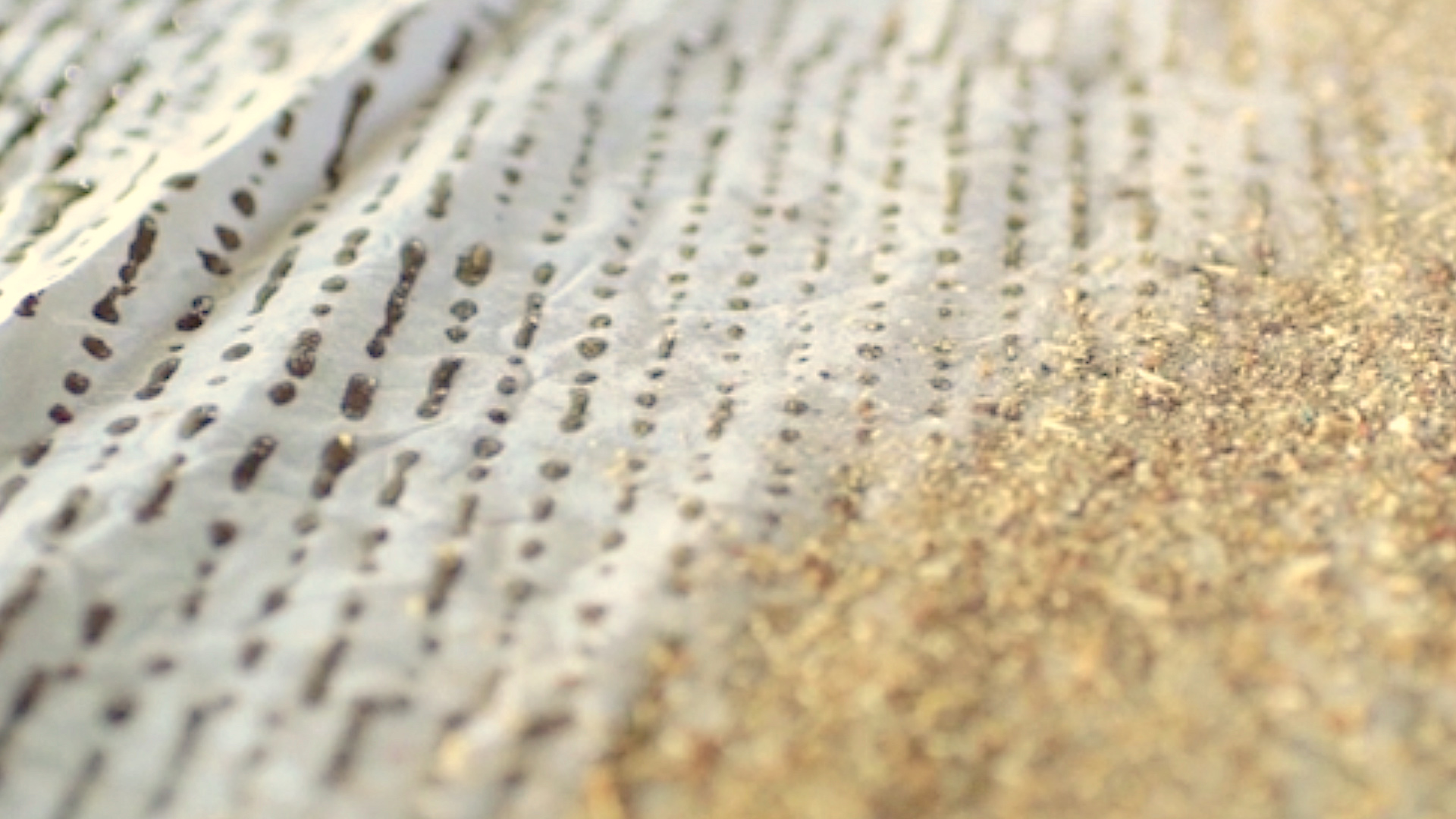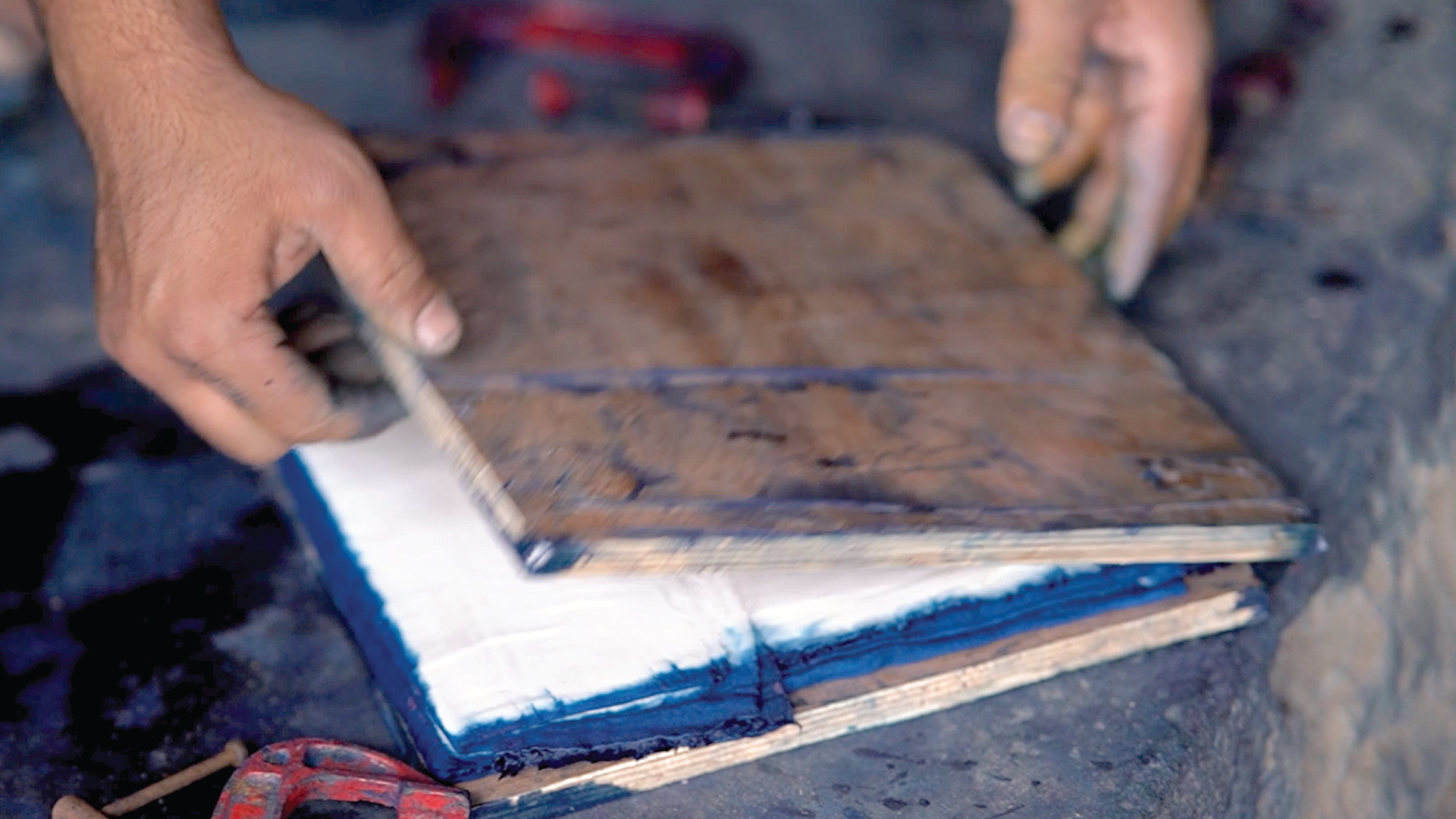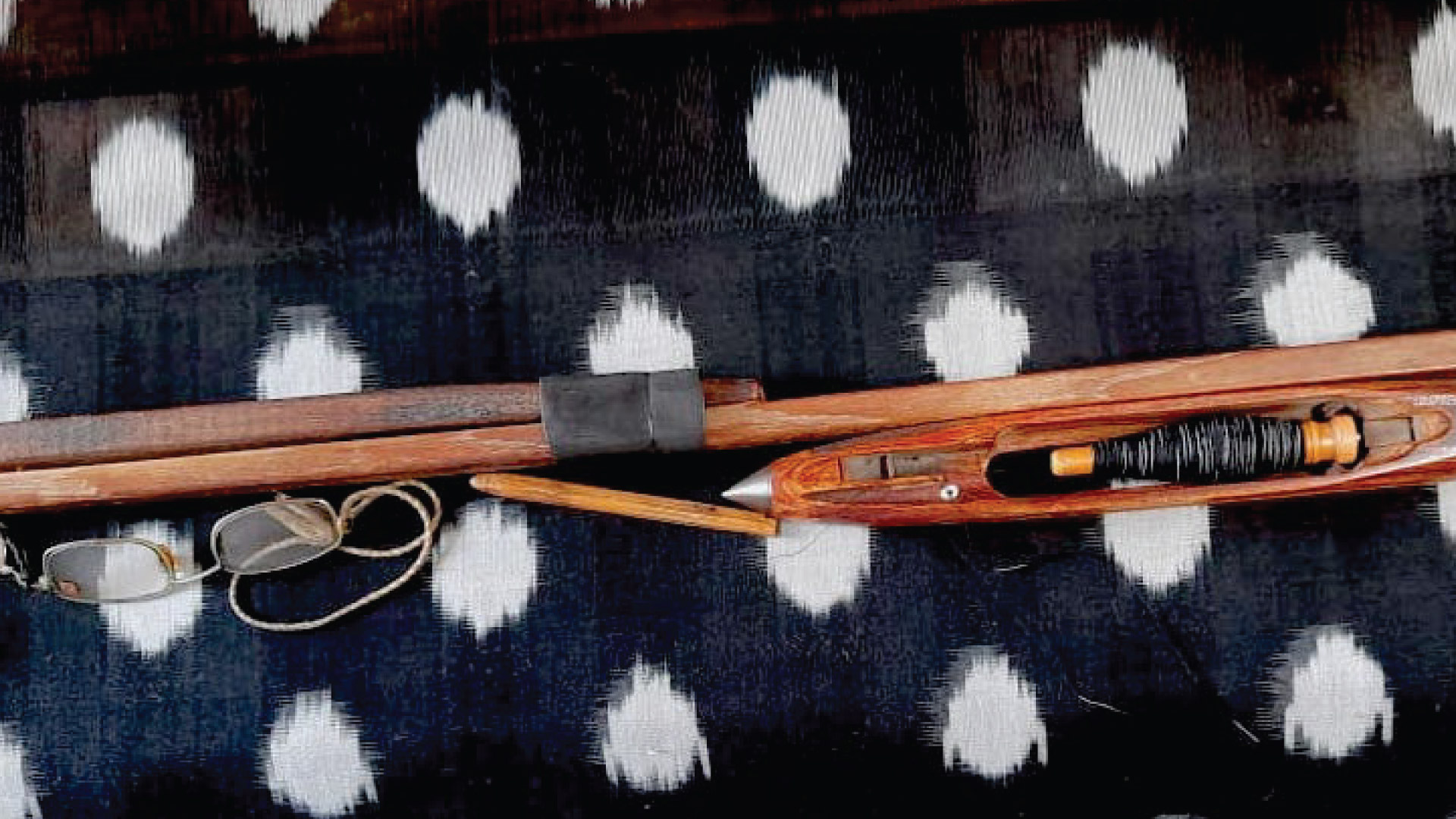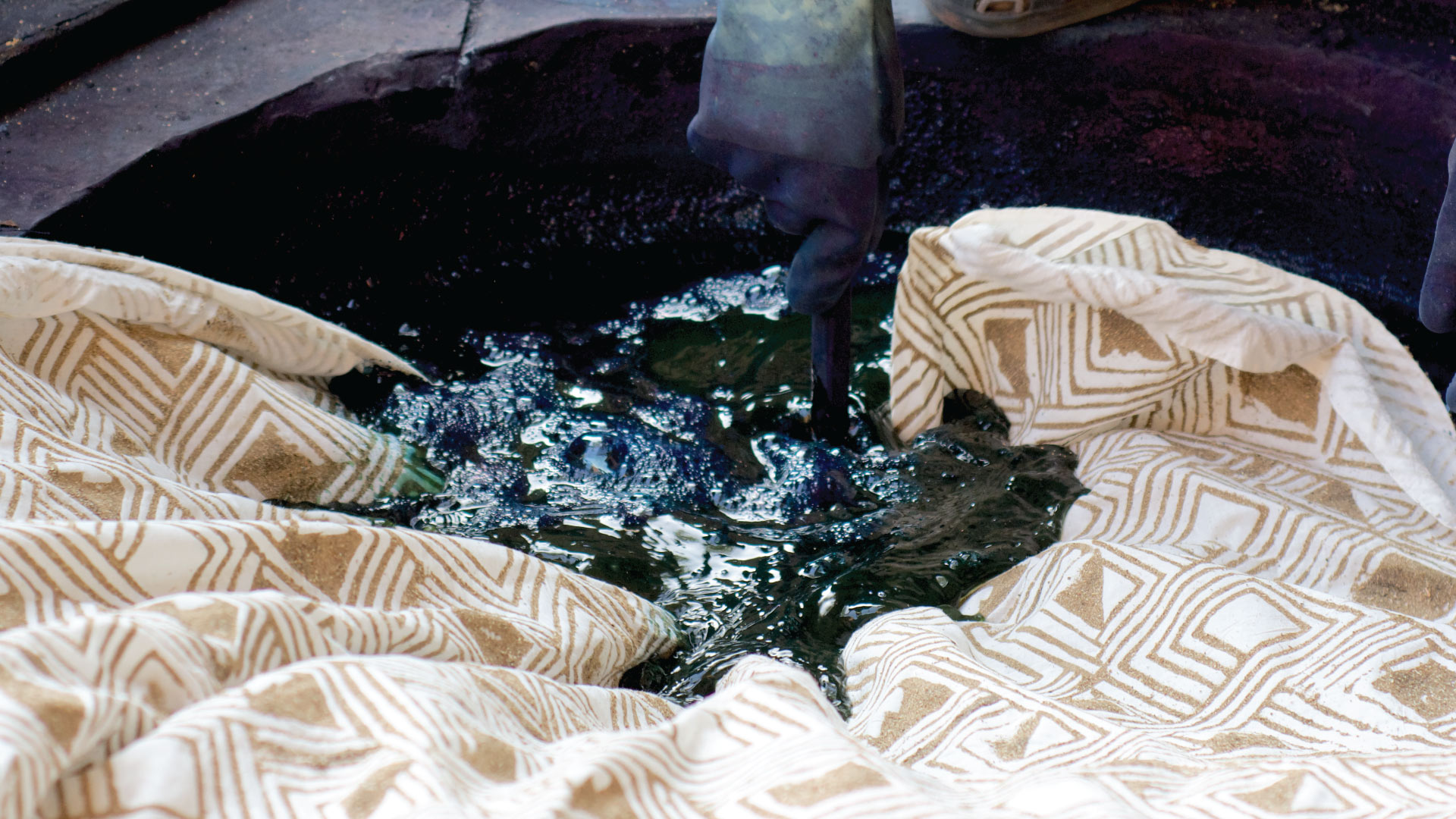A bit about the technique
The process begins with preparing the fabric, which is carefully folded, pleated, or layered in specific ways to create the desired patterns. The folded fabric is then clamped between carved wooden or metal blocks, which act as resist barriers. These blocks are often etched with intricate designs or geometric shapes, ensuring that specific parts of the fabric remain untouched by the dye.
Once the fabric is secured, it is submerged in a vat of indigo dye, which is derived from the fermented leaves of the indigofera plant. The dyeing process itself is magical—indigo starts as a yellowish-green liquid, and only when the fabric is exposed to air does it oxidize and transform into its signature deep blue hue. Artisans often repeat this dipping and drying cycle multiple times to achieve the desired depth of color, with the resist areas remaining undyed, preserving the original fabric color.
